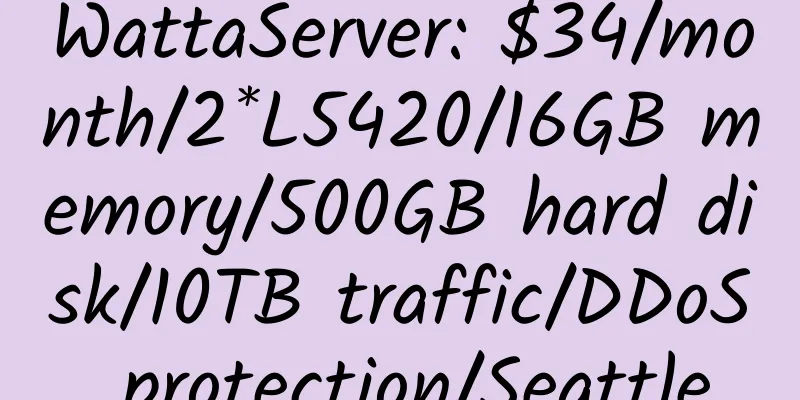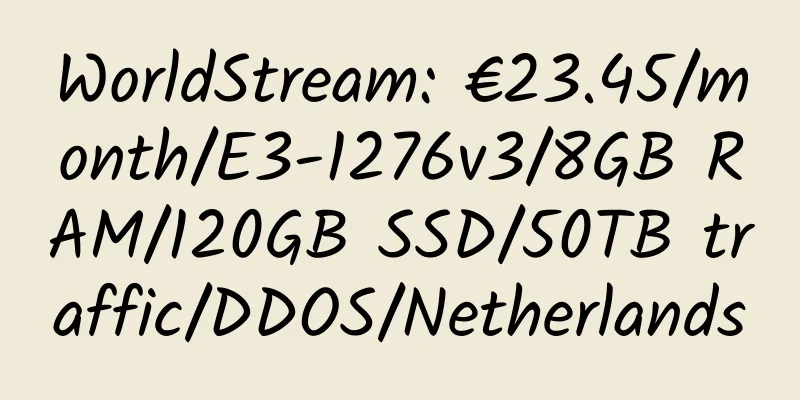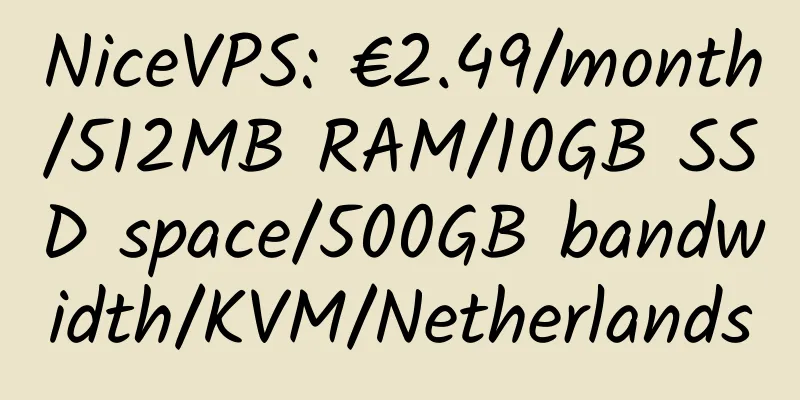1. Introduction to LLsMP It takes up little resources and is convenient.
LLsMP means: Litespeed + MySQL + PHP
Official website: http://llsmp.org/
(http://w0w.me/llsmp seems to be no longer updated)
From my installation situation, I still install LLsMP V0.3.0 for the time being, which is more stable and can be upgraded online.
The latest version of LLSMP 0.6 official version is good and recommended.
Although the Litespeed panel is simple, it has all the necessary functions.
front page:
Although the function of adding virtual hosts is provided, it is recommended to add them under SSH. 2. LLsMP installation 1. Install LLsMP (0.6 official version): CentOS:
PHP5.2
wget http://llsmp.googlecode.com/files/llsmp0.6_centos.tar.gz;tar zxvf llsmp0.6_centos.tar.gz;cd centos;sh install.sh
PHP5.3
wget http://llsmp.googlecode.com/files/llsmp0.6_centos.tar.gz;tar zxvf llsmp0.6_centos.tar.gz;cd centos;sh install.sh php5.3
Debian:
PHP5.2
wget http://llsmp.googlecode.com/files/llsmp0.6_debian.tar.gz;tar zxvf llsmp0.6_debian.tar.gz;cd debian;sh install.sh
PHP5.3
wget http://llsmp.googlecode.com/files/llsmp0.6_debian.tar.gz;tar zxvf llsmp0.6_debian.tar.gz;cd debian;sh install.sh php5.3
Ubuntu:
PHP5.2
wget http://llsmp.googlecode.com/files/llsmp0.6_ubuntu.tar.gz;tar zxvf llsmp0.6_ubuntu.tar.gz;cd ubuntu;sh install.sh
PHP5.3
wget http://llsmp.googlecode.com/files/llsmp0.6_ubuntu.tar.gz;tar zxvf llsmp0.6_ubuntu.tar.gz;cd ubuntu;sh install.sh php5.3
The following is the official version 0.4 wget http://llsmp.googlecode.com/files/llsmp0.4.tar.gz
tar zxvf llsmp0.4.tar.gz
cd centos //centos version
cd debian //debian version
cd ubuntu //ubuntu version
screen sh install.sh
Select a different directory depending on your system.
The following is the official version 0.3 wget http://llsmp.googlecode.com/files/llsmp3.0.tar.gz
tar zxvf llsmp3.0.tar.gz
sh centos.sh
This is only available in CentOS.
2. Create a virtual host sh /root/llsmp/vhost.sh
3. Create FTP User sh /root/llsmp/vsftpd.sh
Note: Be sure to create the directory! 3. Use of LLsMP During the process of adding a host, you will be asked to add a domain name, create an FTP user, etc.
After uploading the website data, you can use it. 4. Precautions 1. Unzip installation Some hosts do not have the unzip command and need to be installed. The command is as follows: yum -y install unzip
Installation under Debian: apt-get install unzip
Wait a moment and the installation will be successful.
2. The website created in the website directory is located under /usr/local/lsws/wwwroot/your domain name/html.
3.
Litespeed panel login address: your IP or domain name: 7080
4.
PHPMYADMIN access address: your IP or domain name/phpmyadmin
Username: root
The password is the password set during installation
5. Directory attribute settings
a. For files or folders that need to have only 777 attributes set, use chmod 777 a file or folder
b. If you need to set the 777 attribute for the subdirectory, use chmod 777 file or folder -R
6. Other commands to install eAccelerator: sh /root/llsmp/eaccelerator.sh
Install Zend Optimizer: sh /root/llsmp/zend_optimizer.sh
Install ionCube Loader: sh /root/llsmp/ioncube.sh
Install FTP (vsftpd): sh /root/llsmp/vsftpd.sh
Create a virtual host: sh /root/llsmp/vhost.sh
Make a backup: sh /root/llsmp/backup.sh
Restart Litespeed: /etc/init.d/lsws restart
Restart MySQL: /etc/init.d/mysql(d) restart(/etc/init.d/mysql restart)
Litespeed backend: http://{ip}:7080
phpMyAdmin: http://{ip}/phpmyadmin
php.ini directory: /usr/local/lsws/lsphp5/lib/php.ini
Virtual machine host directory: /home/wwwroot
Reset litespeed account password: Under SSH: /usr/local/lsws/admin/misc/admpass.sh
VPS Beginner's Guide/Tutorial
How to modify php.ini in VPS to take effect without restarting the system Run Command
/usr/local/php/sbin/php-fpm restart
Solve the limitation of PHP upload file size in Apache2 Generally you need to modify php.ini: - Extension or cancellation of execution time limits:
The default value of max_execution_time is 30 seconds. Change it to max_execution_time = 0 (0 means no limit) or a larger number;
Another way is to add in the PHP program
set_time_limit();
To set the maximum execution time of the page.
set_time_limit(0); //0 means no limit - Find post_max_size = 2M (the default is 2M) and change it to the desired size, such as:
post_max_size = 100M
Usually we only do this step and think that the problem has been solved. In fact, we need to look at the next step. - upload_max_filesize indicates the maximum size of the uploaded file.
Find upload_max_filesize, the default is 8M and change it to
upload_max_filesize = 100M
It should be noted that it is better to set post_max_size larger than upload_max_filesize.
Finally, after the configuration is complete, you need to restart Apache.
For details, please refer to the PHP manual [php.ini core configuration option description]
upload_max_filesize The maximum size of uploaded files.
post_max_size sets the maximum size allowed for POST data.
memory_limit sets the maximum number of bytes of memory that a script can request.
Parameters involved in PHP file upload The default upload limit of PHP is 2M. If you want to upload files larger than this setting, you need to adjust some parameters of PHP, Apache, etc. Below, we briefly introduce some parameters involved in PHP file upload: Whether to allow uploading files via HTTP. The default setting is ON. upload_tmp_dir is used to indicate the temporary directory where files uploaded by PHP are placed. To upload files, you must ensure that the server does not close temporary files and has write permission to the folder. If not specified, PHP uses the system default value The maximum size of the uploaded file is 2M by default. Controls the maximum amount of data that PHP can receive in a form submission using the POST method. If you want to use PHP file upload function, you need to change this value to be larger than upload_max_filesize Sets a time limit in seconds for receiving data via POST, GET, and PUT. If the application is running on a slow link, you may need to increase this value to accommodate the additional time required to receive data. To prevent running scripts from using up a large amount of available system memory, PHP allows you to define memory usage limits. The memory_limit variable specifies the maximum memory capacity that a single script can use. The value of the memory_limit variable should be appropriately larger than the value of post_max_size. max_execution_time sets the time in seconds that PHP waits for a script to finish executing before forcibly terminating it. This variable is useful when the script enters an infinite loop. However, this feature can also cause operations to fail when there is a legitimate activity that takes a long time to complete, such as uploading a large file. In this case, you must consider increasing the value of this variable to prevent PHP from closing the script when the script is executing some important process. It seems that php.ini must be made clear. The functions inside are very powerful. Method 2:
Solution to Warning: Cannot modify header information – headers already sent by … A few days ago, I installed a PHP photo system for testing and found an error Warning: Cannot modify header information – headers already sent by …
I installed openads again today, and this problem still occurred. Angry. I searched online for a long time and someone said that you should write
ob_start();
fail.
Later I opened php.ini and set output_buffering to on. Restart, OK. This seems to be the solution.
| 









